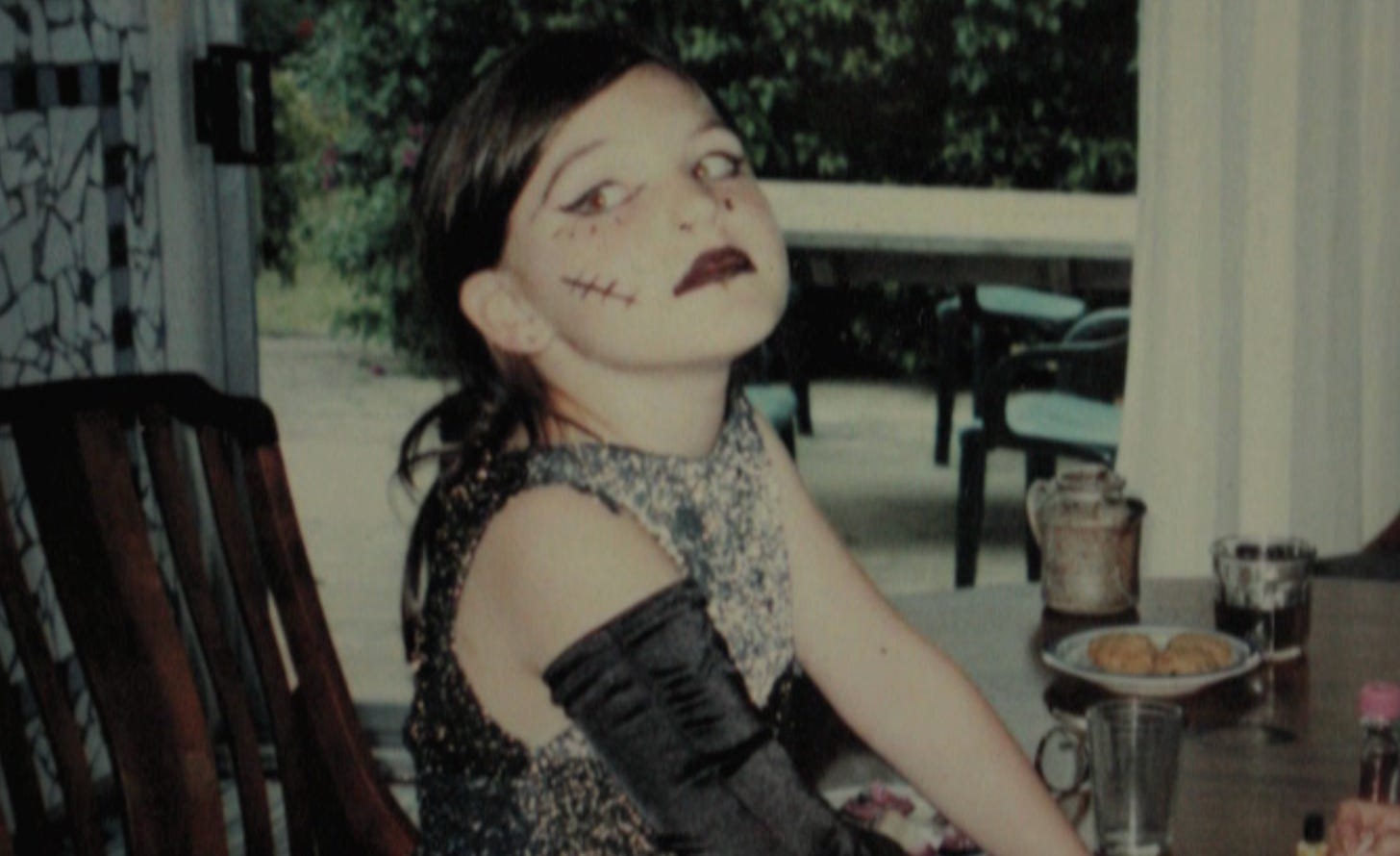
Horror-Day, The Baby Witch
Halloween is coming up- unavoidably, so I took a minute to research what the fuck it’s actually all about (and I still don’t really get it?). It got me thinking about Witches. It was also Coming Out Day in the US recently, so naturally I was thinking about my bisexual mother and grandmother (who, coincidentally claims that she is a White Witch). She reassured me that meant she was a ‘good witch’. According to wikipedia “white magic is used for selfless purposes… the benevolent counterpart of malicious black magic”. So, not like C.S Lewis’s White Witch, but maybe more like Baum’s Glinda The Good Witch from The Wizard of Oz, who was based on his real life mother-in-law -a local herbalist, ‘profound thinker and advanced scientist’. My grandmother too, is a philosopher and a healer (she works in remote communities, often with children in behavioural therapy. She’s a peacemaker, who disappeared to work in the middle east during the war).
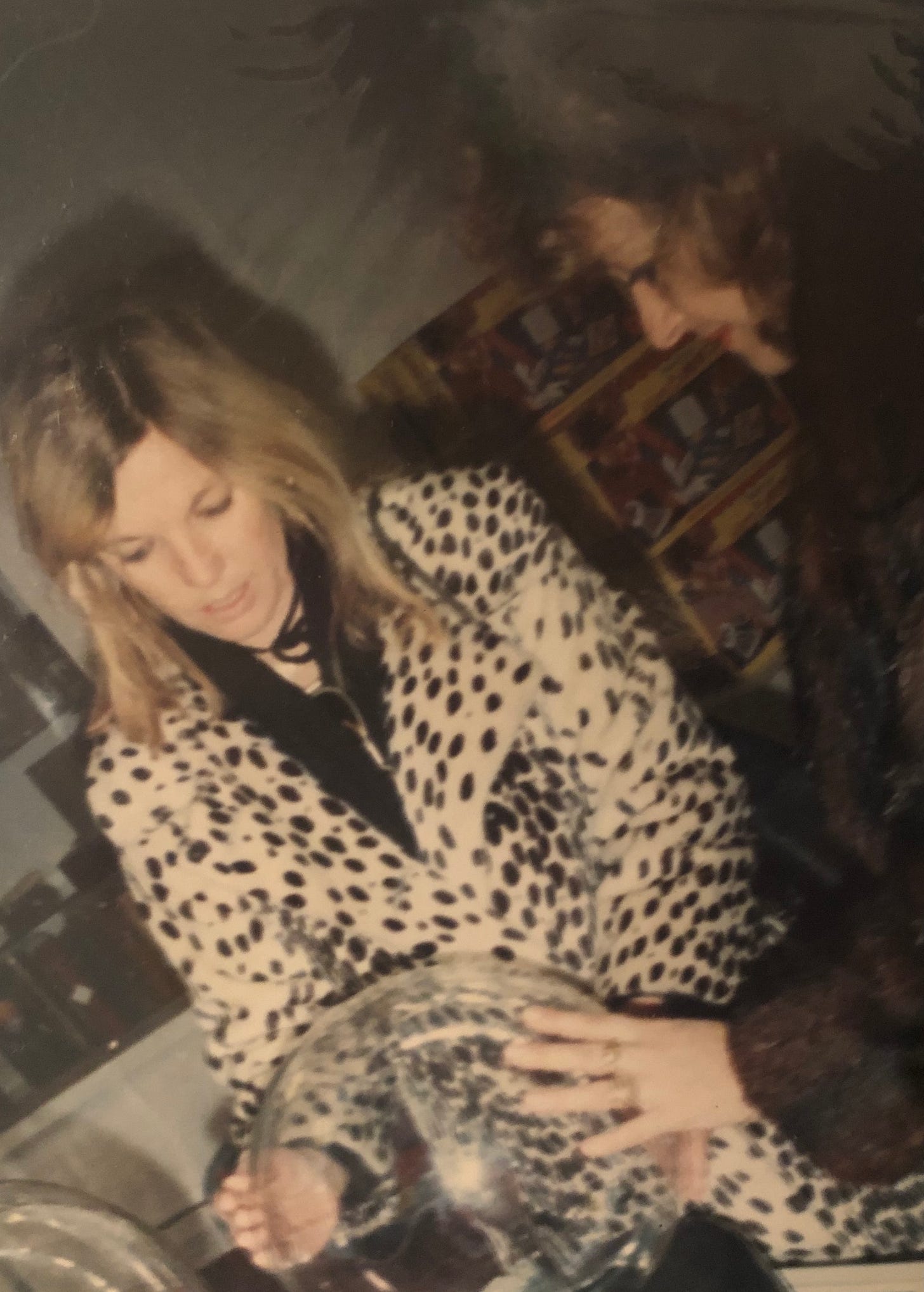
My grandmother, the good witch, doing something supernatural.
As a child, I watched a lot of television. I spent many hours watching Sabrina The Teenage Witch, I Dream of Jeannie and Bewitched (my mother’s favourite show - “In 1990, Bewitched returned to TV at 5am in the morning, after being off air for a few years, and I loved it so much that I set my alarm to get up and watch it most mornings. The same morning Samanatha went into labour with Tabitha on Bewitched, I went into labour with you! I was sure it was a really good sign”). Sabrina reminded me of me and my gay moms. It was the only example (aside from Absolutely Fabulous) I had on television of a family that looked like mine. Two powerful matriarchs -witty, sassy, wise and fabulous. They had a gothic looking boyfriend for a while with spiky black hair who was the Warlock or the cat, in my mind. Our household felt like a witch house. We had velvet and beaded curtains, coloured lamps and walls, lace shawls, a shrine with various trinkets, postcards of pin-ups, vintage prints in gold frames, animal prints, crumbling sandstone walls, mosaics. It felt like a vampire’s lair sometimes. My step-mother Monica, was American, and she made our house famous for the yearly Halloween Parties we threw. The three of us had Halloween names -mine was Horror-Day.
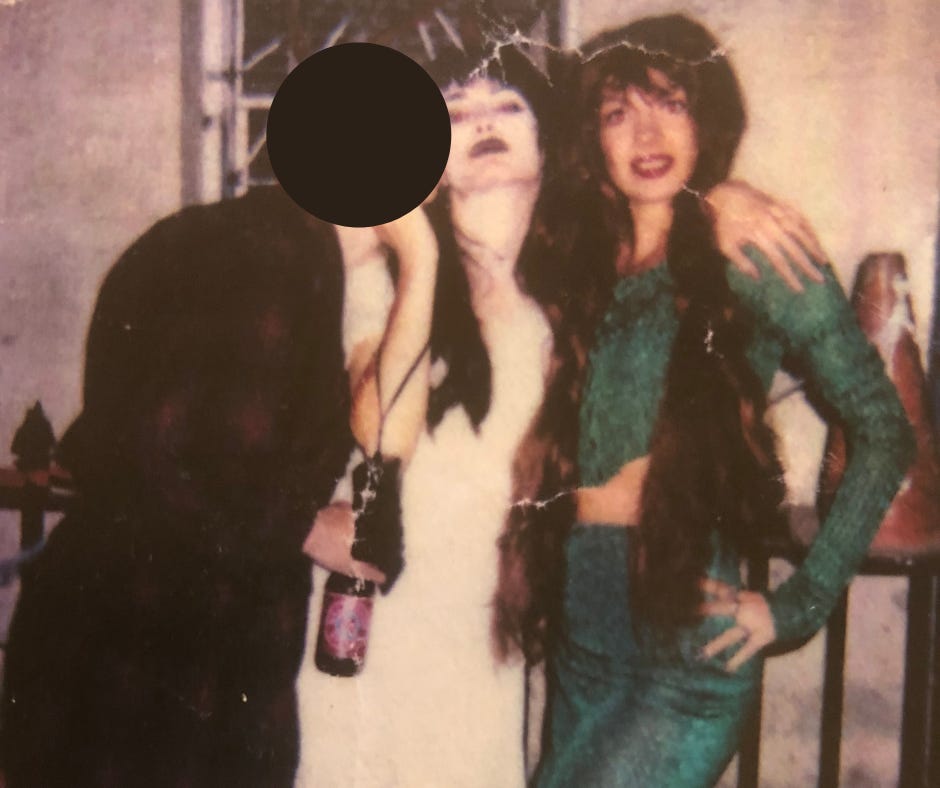
My Mothers on Halloween with My Godfather dressed as Fester (he hates the photo).
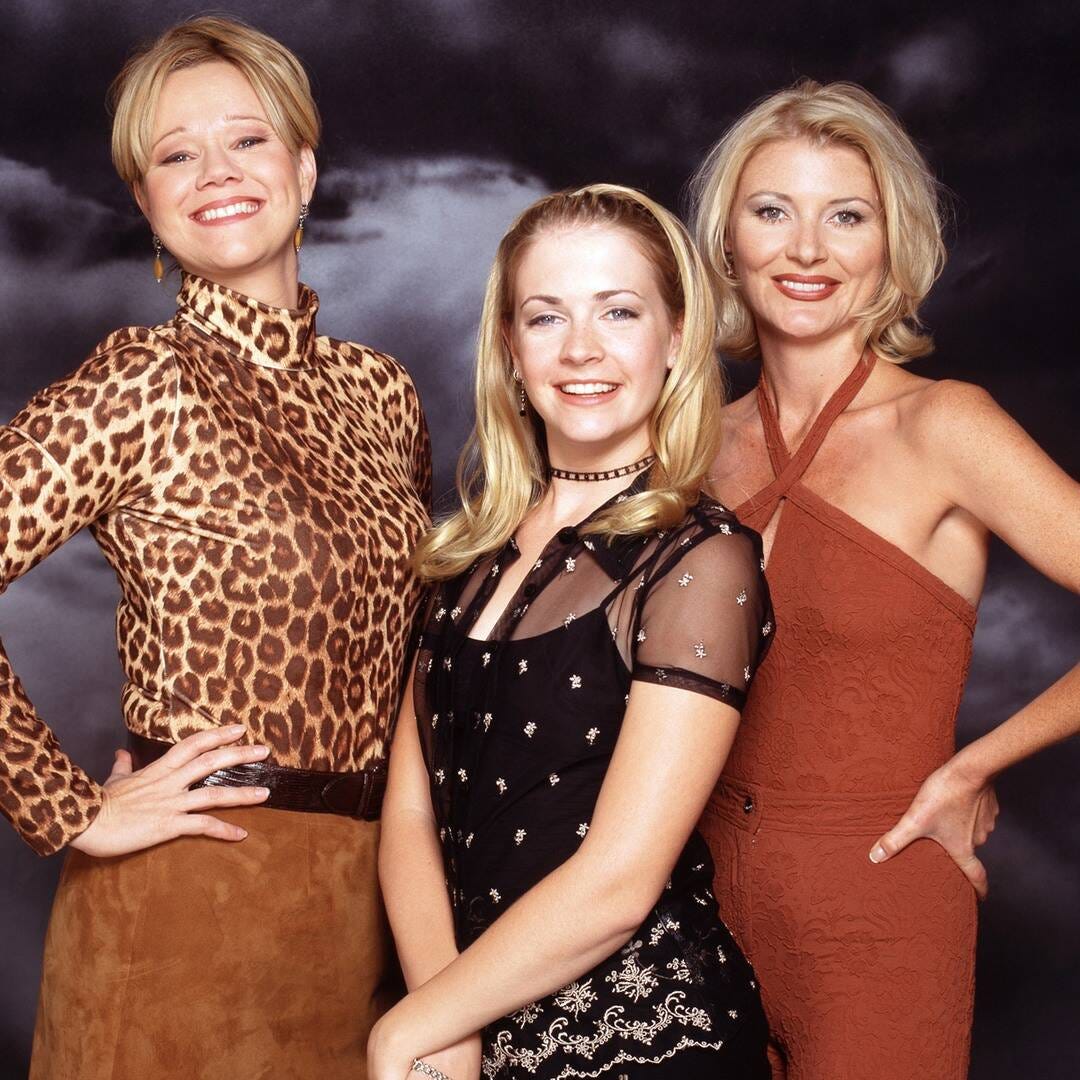
Sabrina The Teenage Witch
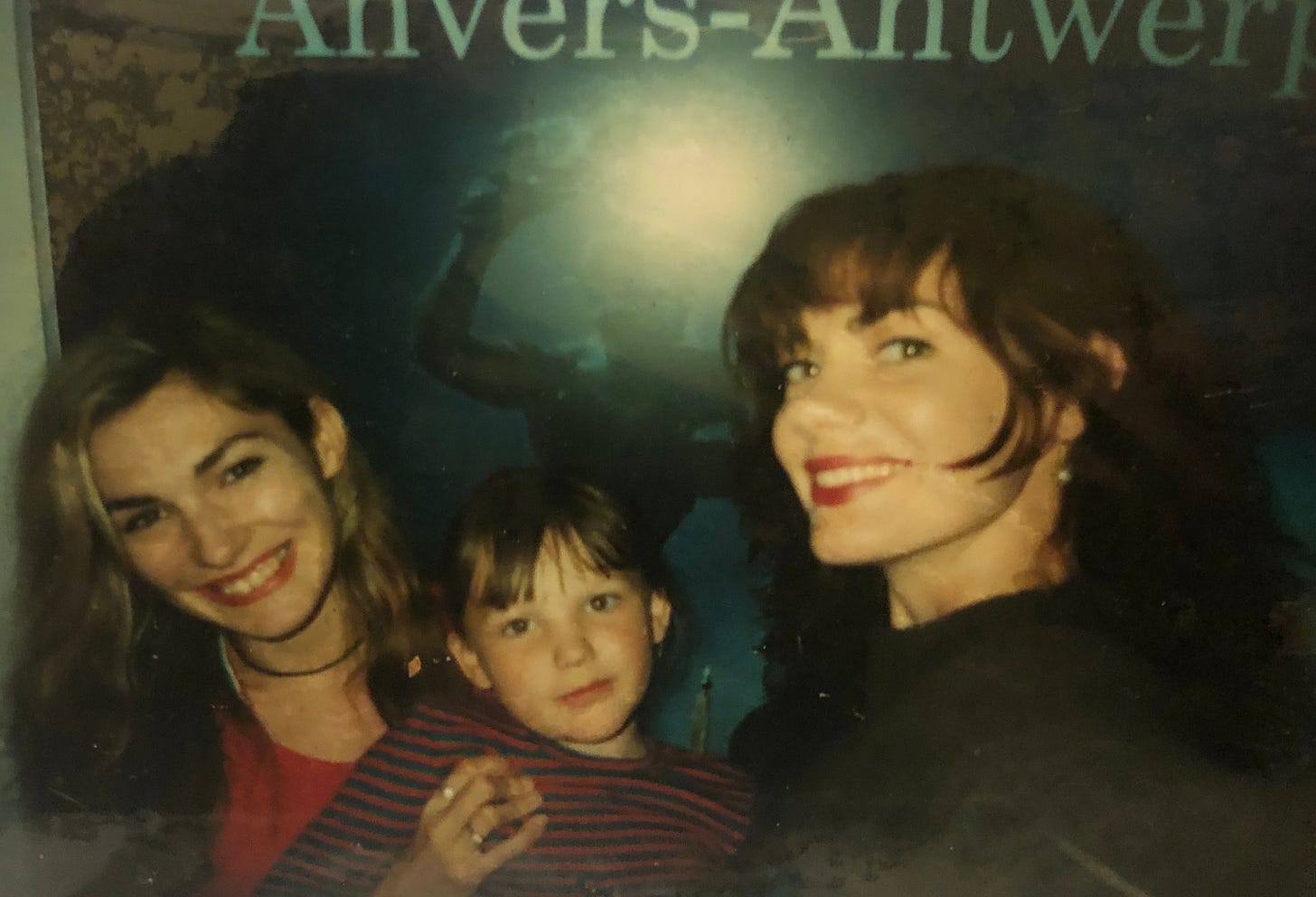
My Mothers & Me in Antwerp.
One of our houses was on the unfortunately-named ‘Raper St’. My mother, stepmother and I shared a big old terrace with two other single mothers and their kids -Persia and Phoenix (who were close to my age). Our mothers would go out singing in their band ‘White Trash Mamas’ on the weekends, wearing maids uniforms with their names embroidered on the front. We spent most of our time playing dress ups in the yard and trying to avoid ‘The Witch’ who lived upstairs -a grumpy old lady, that we truly were afraid of and believed was a witch. She would thump her broom on the floor-boards when we were being too noisy.
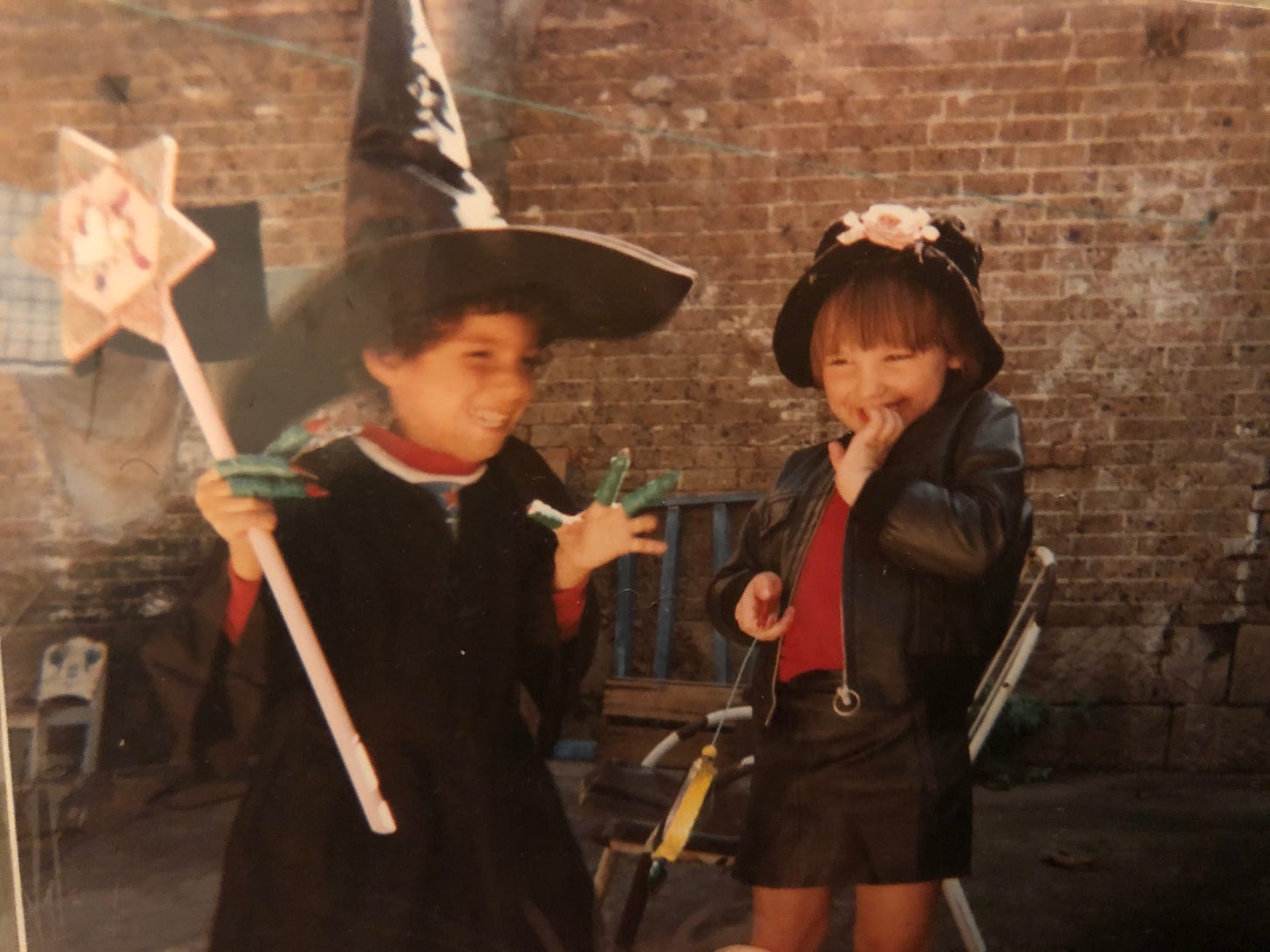
Pheonix dressed as the Wicked Witch (he loved to borrow my dresses, and unsurprisingly grew up to be a fashion designer). That’s me on the right!

Me, Persia and her mother. A house full of Witches.
Like most things in life, the notion of witches really comes down to power, or lack thereof, which I’d like to indulge myself in and explore here. The most vulnerable (though perhaps the most unwilling to take shit) people in society are elderly women. Throughout history, witches have been depicted as old and ‘ugly’ (which seems to be code for ‘old’ anyway -silver hair, bad teeth, moles, hair on their chins). They were often poor too. They were childless, widows or ‘old maids’ (* a single woman regarded as too old for marriage*). These are the worst, most dangerous and vulnerable qualities a woman can carry in a patriarchal society.
Witches are independent and seen to be ‘wise-women’ of ‘superior knowledge’ (read as: opinionated, smart, educated or experienced). According to the UN, “women make up more than two-thirds of the world's 796 million illiterate people and 132 million girls are out of school”. They say “every additional year of primary school increases girls' eventual wages by 10-20 percent. It also encourages them to marry later and have fewer children, and leaves them less vulnerable to violence”. In other words, education and knowledge gives women power.
Female political leaders are regularly referred to as witches - “Ditch the Witch” people said about Australian Prime Minister Julia Gillard, Hilary Clinton is regularly depicted as the Wicked Witch, British Prime Minister Teresa May’s laugh was compared to a witches cackle, German Chancellor Angela Merkel and Nancy Pelosi are depicted as witches too. When former British Prime Minister (the first female PM) Margaret Thatcher died, I was outside the Ritzy Cinema in Brixton. They changed their marquee to say “Ding Dong The Witch Is Dead” while people chanted the song around fire pits in barrels. I understood the cultural significance for the people who had been so hurt by her policies, but the Witch reference confirms that we are repelled and threatened when real women have power, let alone when they use that power autonomously, even when it’s gained democratically. We especially have trouble accepting that real women could be callous and cruel, that real women could prioritise a cruel financial discipline over likeableness the way men can with ease and praise. We would prefer to think that kind of woman is a Witch and not of this world. The only feminine energy in this world who is allowed to have power is make-believe -A Witch.
Witches don’t care for the often repressive, laborious, and physically taxing reality of child bearing and rearing, or fitting into an expensive and ever shifting beauty standard for the benefit of the male gaze. In North America women spend nearly a quarter of a million dollars over their lifetimes on beauty products to stave off the supposedly ‘undesirable’ fate of being seen as an ‘old maid’ (Witch!). Tens of thousands are spent on IVF treatments and egg freezing and thawing, while there are 153 million orphans worldwide and women’s right to make decisions about their own bodies and pregnancies is continually scrutinised and under threat, if not non-existent. I’m not making a judgement on choices here, but outlining the financial and emotional weight and pressure of fertility issues on women. Barron women have historically been called Witches. Witches were often thought to eat children in Roman times, or despise them and wish to eradicate them (like Roald Dahl’s The Witches).
Women have the debatably good/bad fortune of outliving men, and are often left alone, in relative poverty at the end of their lives due to shorter time in the workforce (childbirth and rearing), wage inequality and/or a reliance on a male partner who once earned/managed(or mismanaged)/concealed household finances who is now gone. Less than 20 percent of the world's landholders are women, 60 percent of chronically hungry people are women and girls. Many women will fit the typical description of a “Witch” toward the end of their lives. Though they will be utterly powerless.
What a ‘Witch’ (a fictional figure) has that most women are depraved of and want -is power and control (over themselves, their fate, their bodies, their fortunes and those who seek to harm them).
Witch-hunts (arguably femicide -though men were killed too) killed over 40,000 of the 80,000 people in Europe tried for witchcraft. They were often strangled and burned alive at the stake (so there was no body to bury). UK Women, who made up 84% of the accused, were not permitted to give evidence at their own trials. It’s come to light that Catholic and Protestant churches were using this display of violence in competition for market share. An interesting take. Religions have always used women and queer people as pawns.
Witchery has made a come back. This is affirmed by a slew of articles in The Guardian including ‘Coven ready: from Instagram to TV, why are witches so popular?’ to ‘Season of The Witch: Why Young Women are flocking to the ancient craft’. Tik Tok is full of young women and queer people ‘manifesting’ and casting spells. One states “Today’s teen witches are activists for not only feminism but for the ending of animal cruelty, racism, homelessness”. Author J.K Rowling’s TERF opinions are so especially shocking and heartbreaking because the world of magic (famously revived by the Harry Potter series) has always been a space for the weird, wonderful, vulnerable and persecuted to dwell in. Quoting Starhawk, from her 1979 book The Spiral Dance “To reclaim the word witch is to reclaim our right, as women, to be powerful”. An interview with a “witchcore” (I need to investigate this genre) punk musician called Suzy X gives us this hot take- “I think one of the biggest conspiracies of a male-dominated society is the suppression of feminine intuition, in that women have been conditioned to second-guess our own hunches, or second-guess our own abilities, all the time”. Here, I get to a term I just learned called ‘Heterofatalism’ from a Refinery 29 Article called ‘In 2021, How Are Women Supposed To Be With Men?**’. **I see obvious correlations with the rise of heterofatalism and witchery, with women being fed up with their feelings of powerlessness and disrespect.
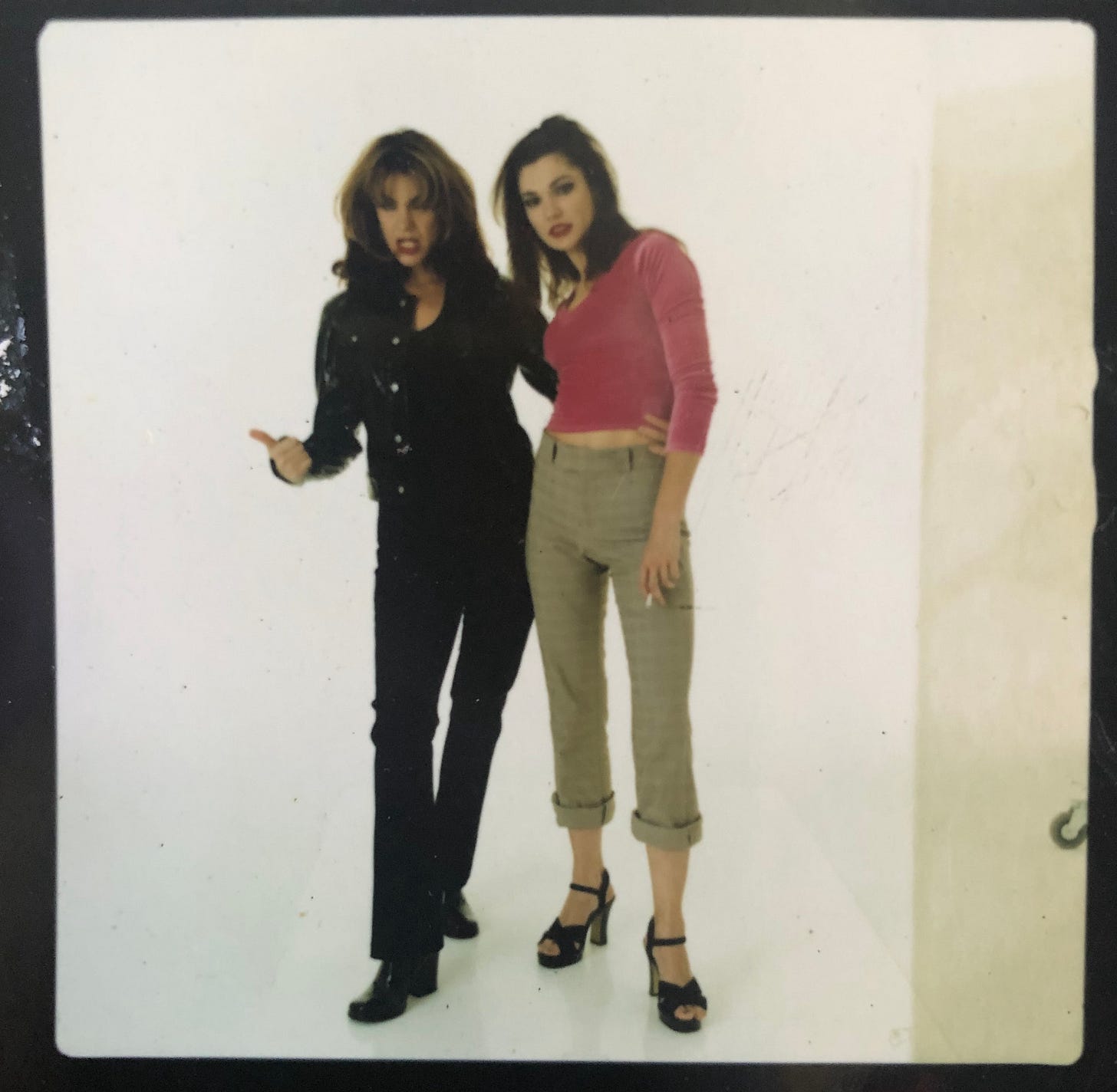
My Mothers, being every day Witchy Vixens
The equivalent girl-bossification of Witches is the Vixen/Siren. An article written by Madeline Miller ‘Cursed: from Circe to Clinton why women are cast as witches’ says “a better parallel to “witch” is the word “whore””. She says “both are time-honoured tools for policing women, meant to shame them into socially prescribed behaviour. A whore transgresses norms of female sexuality; a witch transgresses norms of female power. Witches are often called unnatural because of their ability to threaten men”. The seductive witch, the evil stepmother or the Succubus is pervasive throughout history; the message being that the use of sexuality is perhaps one of Women’s only true powers, and that is always shameful and evil, full of deceit and trickery. The first dissection of a clitoris, it was referred to as “the shameful member”. I laugh at the overtly phallic image of a witch riding a broom, but revel in the bastardizing and sexualising of this symbol of domestic servitude. Apparently, the broom visual comes from a Pagan fertility ritual - “This “broomstick dance” she writes, became confused with common accounts of witches flying through the night on their way to orgies and other illicit meetings”. So much unravelling to do here, but the obvious take away -female sexuality and sexual autonomy is incredible threatening and powerful.
Additionally, I have noticed a resurgence in Women seeking to reference themselves as Gods or Godessess - figures more powerful than a Women and perhaps more attractive than witches (the Girl Boss is back). These things always play out in popular culture. We’ve gone from the 2nd Wave feminism era of Carole King’s **‘**You Make Me Feel Like A Natural Woman’ to Helen Reddy’s ‘I Am Woman (Hear Me Roar)’ to the 4th wave brand of Ariana Grande’s ‘God Is A Woman’ to Halsey’s ‘I am Not A Woman, I Am A God’. Being mere Woman has rarely been good enough for ourselves or anyone else, not even natural, and definitely not when we’re roaring. Shapeshifting is a well known witchy attribute, and gee I wonder why? We would love to be anything other than women. Our self-hatred and internalized misogyny and disempowerment is glaring at us in the mirror of all our fictional fantasies.
In the last decade, United Nations officials have reported a rise in women killed for witchcraft across the globe. In India the problem is particularly well-documented, with older women being targeted as scapegoats or as a pretext for seizing their lands and goods. In Saudi Arabia, women have been convicted of witchcraft in the courts, and in Ghana they have been exiled to so-called “witch camps”.
From ‘300 Years on, will thousands of women burned as witches finally get justice?’
It’s worth noting the prevalence of ethnic and racial discrimination in who gets called a Witch. Immigrant women who scratched out a living in the community with their experience as midwives, herbalists and hedge-doctors have historically been cast out as ‘Witches’. The witches cauldron was home-made medical care for the poor. The medical establishment has long overlooked and neglected female health and the health of anyone who isn’t white. . You can read more about the institutional neglect of female health in a daunting read called “Invisible Women: Exposing Data Bias In A World Designed For Men”. Witches were often just women who tried create their own solutions to the problems and pains women, immigrants and the poor were facing.
During a tour of the UK, my friends Dan and Richard (from The Feeling -the band I was touring with) joined me on a boat tour down some canals where I noticed a large wooden structure with a seat. I asked what it was, and without a blink, the guide joyfully told me they would dunk women accused of being witches in the canal strapped in this levered wooden seat). If they survived (they were a witch and would be burned at the stake), if they died they were innocent (but were now dead). The absurd horror of it wounded me in a way that ruined my entire day. So, Happy Halloween mother-fuckers. Give a witch a chance. Give a woman everything she deserves and everything you can and may we embrace our earthly powers of being.
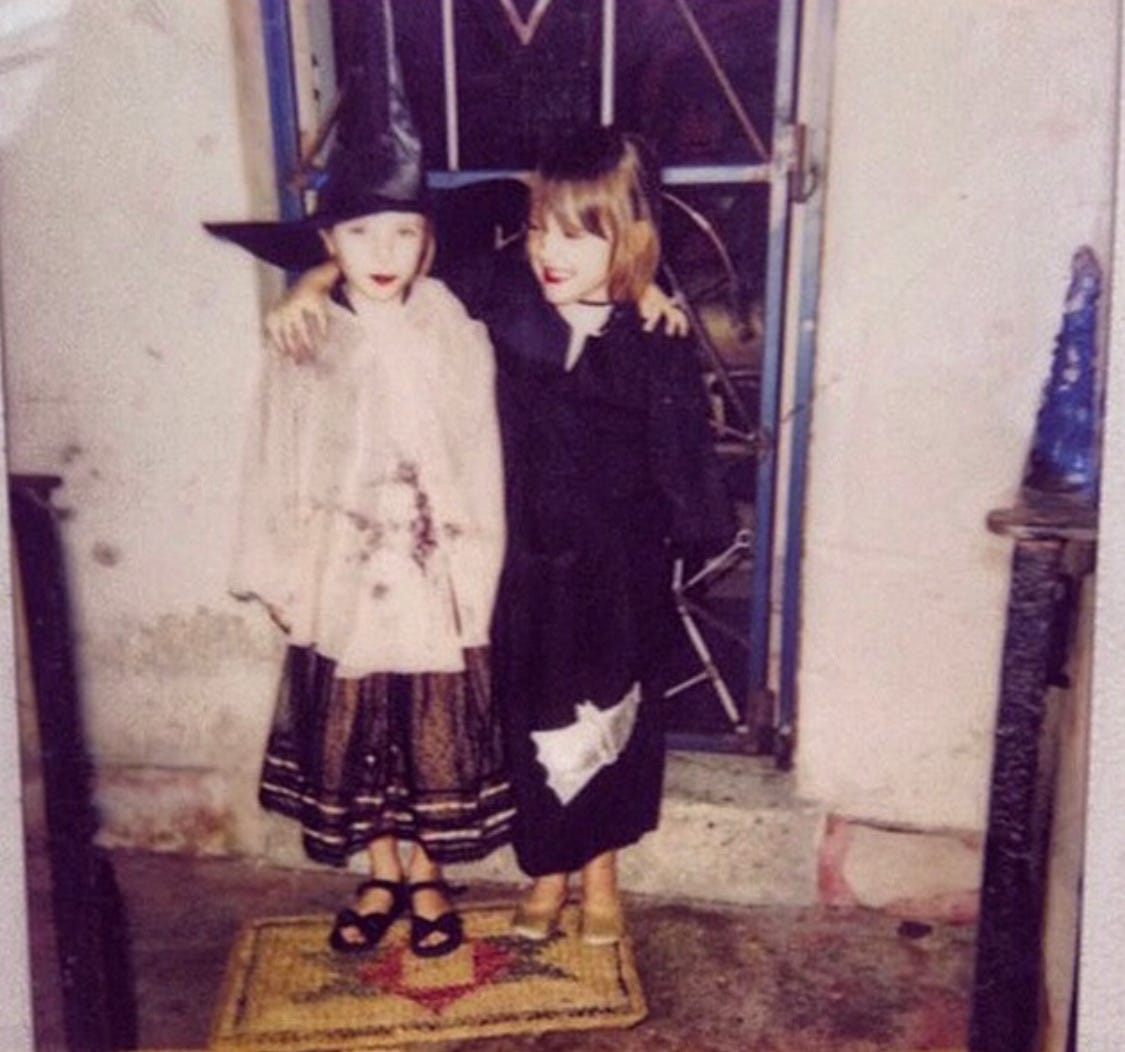
My best friend Pia and I, The Little Witches outside my childhood home. My father built a security gate out of nuts and bolts welded together in a heart shape.
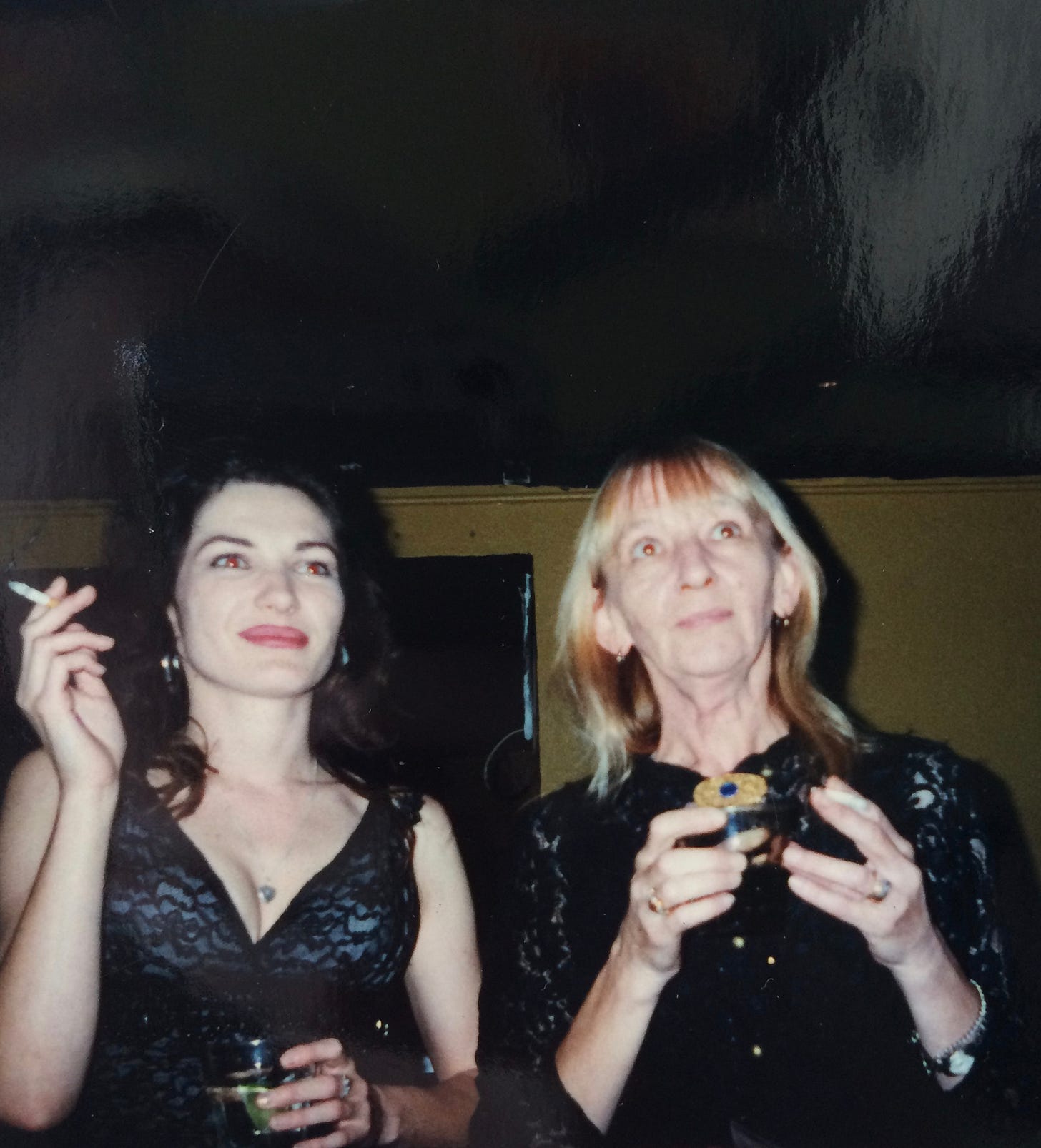
My Mother and Grandmother on a normal day, Witchy as fuck.
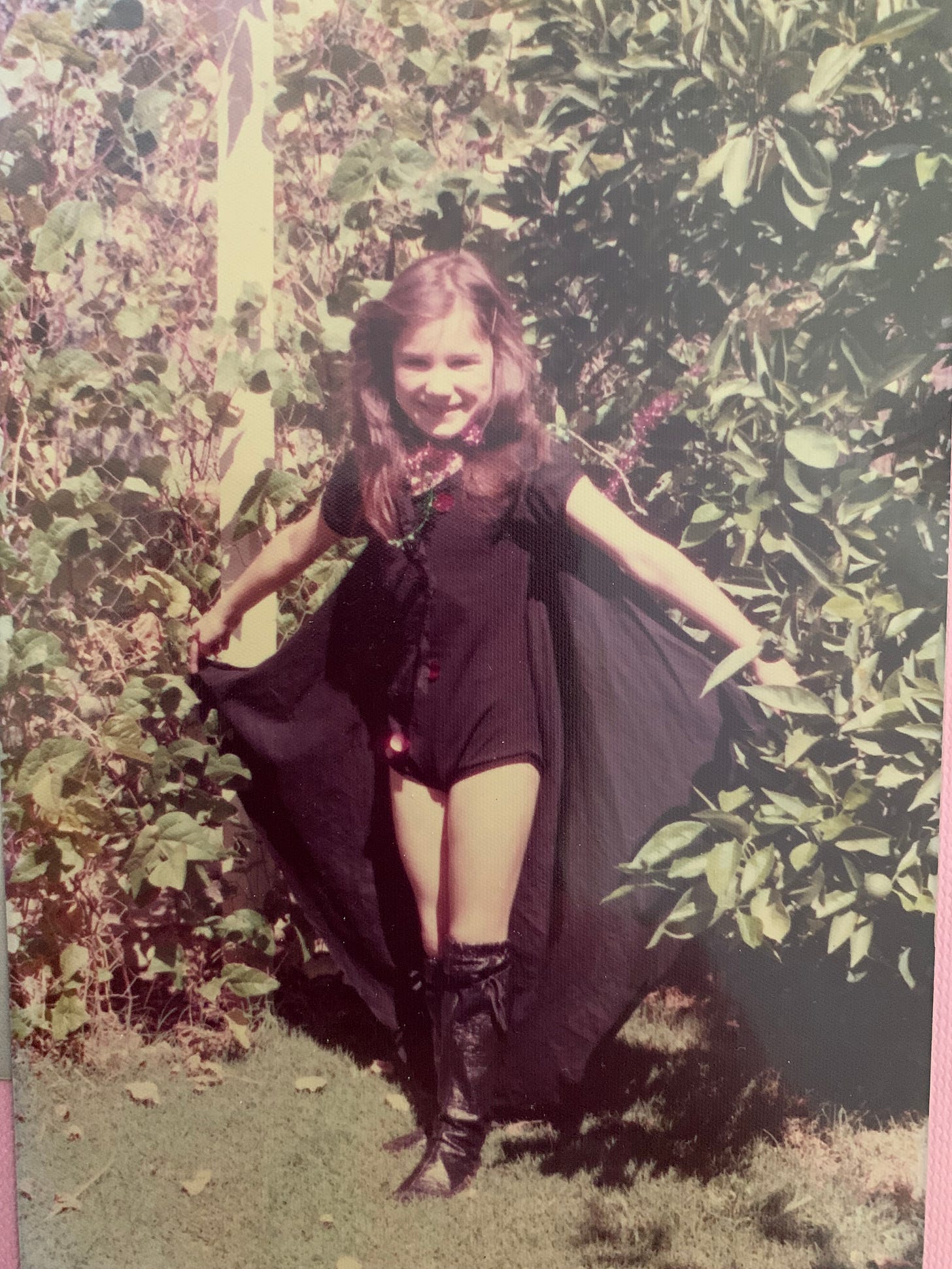
My Mother, The Witch “I was obsessed with witches when I was little and wore my witch costume a lot (pointy high heel boots, black leotard, black cape) and read any book I could find about witches. At my fifth birthday party all the little girls got scared of me because they decided I was actually a witch and they wouldn’t play with me.”
